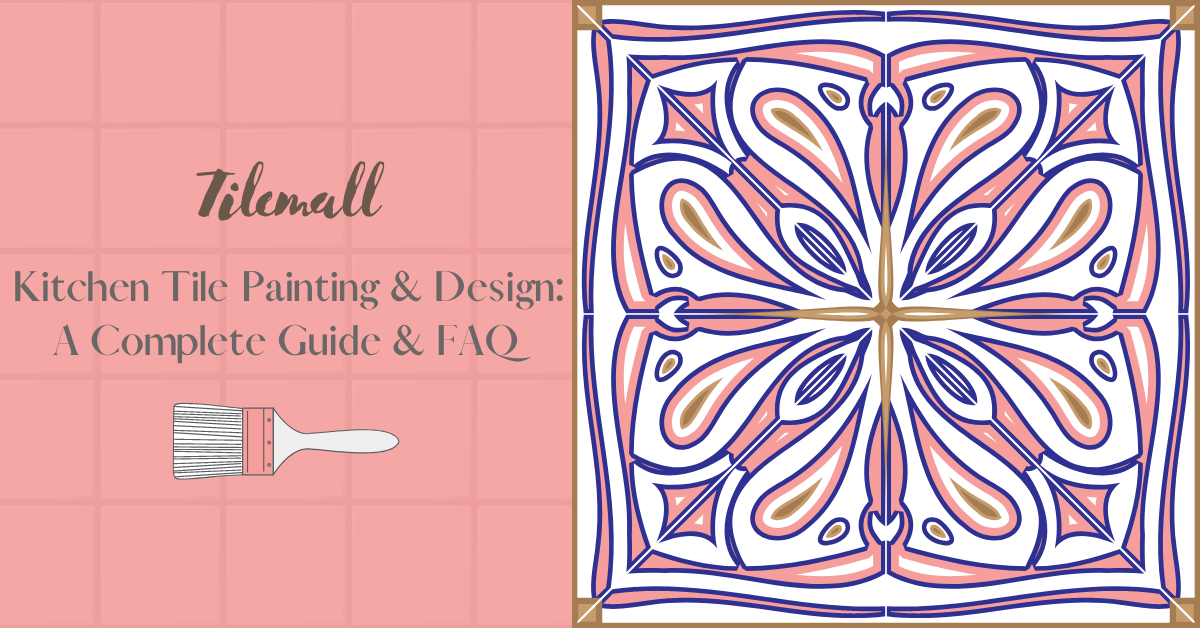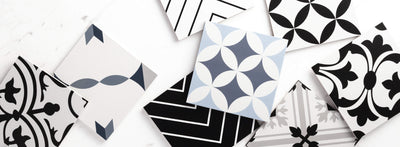Kitchen tile design is one of the most essential and highly coveted parts of creating a stylish culinary space for many homeowners. The ability to create a space in which food can be prepared, conversations can be shared, and memories can be made is simply wonderful, and it’s hard to blame anyone for putting a considerable amount of care and consideration into the choices made during this process.
As one of Australia’s leading tile distributors, we at Tilemall get questions and queries all the time regarding the best ways to create an evocative and practical kitchen tile design colour scheme. Whether that means questions about paints, placements, or planning, it’s clear that many people wish they had more information on how to best start their kitchen tile project.
Today, we’re going to take a look at some of the most common questions, queries, and ideas we come across in kitchen tile painting and design. That way, we can provide you, the reader, with an overview of some major topics within the tile placement process. Plus, in future, we can expand some of these topics into their own articles later down the line.
So, let’s get into our kitchen tile painting tips and tricks and see where things go from there.
Can You Paint Tiles in a Kitchen?
Let’s start with the absolutely essential question. There’s a lot of uncertainty about whether kitchen tiles can be painted, which is understandable. People are worried about doing things that may damage their new renovation, and the kitchen is one place you definitely don’t want any loose paint lying around. With that said, for those that have a knack for DIY, you can certainly paint tiles in a kitchen. That said, you will need to ensure that you have the right tools for the job and that you know what you’re looking to achieve going into it, as will become clear later in the article.
What is the Actual Process of Painting Kitchen Tiles?
You’ll need to clean and sand your tiles before starting to ensure a fresh, even surface on which the paint will bind. Then, once you’ve effectively covered your fixtures and other non-painting areas with protective tape, use your primer, and then follow up with two coats of paint before fixing your detailing with a grout pen. Remember that tiles need tile-specific paints, so look for tile paints before taking this project on.
Can You Just Paint Over the Existing Tiles in a Kitchen?
If you have existing tiles that need a touch-up or have experienced some kind of aesthetic degradation that hasn’t damaged their structure, you’re in luck. The same process detailed above will work on your existing kitchen tiles. With that said, tiles that have experienced structural damage should be considered for replacement rather than repainting, especially kitchen floor tiles.
What is the Best Paint to Use on Kitchen Tiles?
This will mostly come down to personal preference, but some brands have been touted as more effective than others in particular situations. Zinsser Bulls Eye 123 has been shown as effective for stained tiles, while Rust-oleum Universal All Surface Paint is considered a good option for splashback tiles. Do your research, and just make sure that you’re getting a paint brand that has been made to work with tiles, if not a specific tile paint.
Is Painting Your Tiles a Good Idea?
This depends on where exactly your tiles are and what that area will be used for. In most areas, painting tiles is indeed quite a good idea for those that want to spice up their styles or bring new life to their kitchen. However, if an area gets a lot of foot traffic or water, then painting may open you up to some unnecessary issues and damages. Additionally, keep in mind that some types of tile material will work better with certain kinds of paint than others. Porcelain tiles work best with certain enamels, while chalk paint is often the go-to for marble tiles, with other materials having preferred paint types in kind.
How Long Does Paint Over Tile Last?
If you’ve put in the upfront work and prepared it properly, your tile’s paint job should last for many years. That said, as with the previous point, repeated water contact and other issues of the sort can cause damage and wear to build up faster. So, keep this in mind and think about whether you’d prefer a more permanent solution, such as a complete kitchen tile replacement.
Are There Other Ways I Can Update My Kitchen Tiles Without Removing Them?
Technically, yes. However, whilst temporary tile stickers and repair kits for tiles are available, in most cases, these will only provide a short solution. If your tiles are damaged and need major repairs, you are generally better off just replacing your kitchen tiles entirely.
~ Painting kitchen tiles is a fantastic way to get new life out of your existing design or simply bring some more of your own creativity into your walls. Just remember that different tiles and spaces will have different needs, and it’s up to you to ensure that you’re using the right materials for your project. If you have any uncertainty throughout this process, feel free to ask the team at Tilemall while you’re completing your order, and we’ll do our best to help you.
Until then, explore our tile range, stay up-to-date with our tile blog, and find the kitchen tiles of your dreams today!

